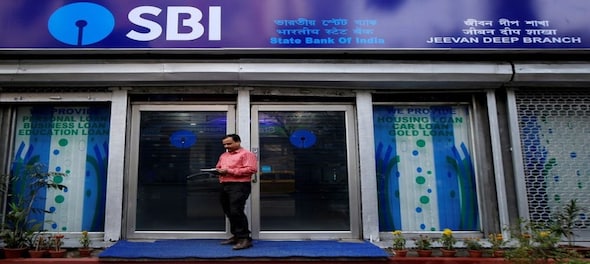
The country's largest public-sector lender State Bank of India (SBI) has filed an initial draft with Security and Exchange Board of India (Sebi) to sell up to 4 percent stake in its credit card venture, SBI Cards and Payments Services (SBI Cards). The IPO is expected to be around Rs 9,000-9,600 crore in size and as per reports, it is likely to hit the market this month.
The share sale is poised to become the fifth-largest IPO in the country after Coal India, Reliance Power, GIC Re and Oil and Natural Gas Corp (ONGC) and will help the parent, SBI, raise funds to boost credit growth. For FY19-20, it is likely to be the largest IPO.
SBI, which holds a 74 percent stake in the unit, along with private equity firm Carlyle Group, which holds the rest 26 percent through its subsidiary CA Rover Holdings, will together sell 13 crore shares or 14 percent of the company through the IPO. While Carlyle is looking to sell a 10 percent stake via the IPO, SBI would sell a 4 percent stake in the company.
Valuations
Given the higher share of the offer for sale (OFS), it seems that the IPO is primarily to unlock value for the existing investors (SBI and Carlyle) and also to provide an opportunity for non-promoters to invest in a direct play on India’s rising consumerism and digitisation story, said Emkay in a report.
"For SBI, the IPO would imply a value of Rs 37 per share (post discount), which is higher than Street estimates, adding Rs 15 to the target price for SBI (Rs 350)," it added.
READ MORE: SBI Cards IPO: 10 vital facts about India’s credit card market that the draft prospectus reveals
Meanwhile, according to Ambit, expected valuations of the IPO are at 83 percent premium to average valuation of high growth and/or high RoE lenders like HDFC Bank, Bajaj Finance, Bandhan Bank, AU Finance and Aavas Financiers.
However, unlike other lenders, SBI Cards is a mono-line business with no optionality to get into other businesses given parent SBI’s presence in other businesses, it noted. It added that this lack of optionality means that the company is exposed to vagaries of credit card business compared to other lenders and hence should also be a factor determining valuations.
"The valuation benchmarking for SBI Cards becomes difficult due to a lack of strict comparable players. The credit card business comes under the normal operations for most of the banks," Ambit further explained.
As per Emkay, key risks include regulatory risk on merchant discount rates (MDR)/Interchange fees, higher capital requirement and rising asset-quality risk given weakening macros/employment rates.
Ambit further noted that while asset quality has held up till now, a slowing economy and job growth can lead to an increase in NPAs, in line with global experience.
Credit Card Industry
As per the Ambit report, SBI Cards HAS an 18 percent market share in the number of outstanding credit cards as of September 2019 and 17 percent/18 percent share the number of credit card transactions/value of credit card transactions in 1HFY20. The market share of SBI in most of these parameters has increased over the years making SBI the second biggest credit card issuer in India after HDFC Bank.
It added that low penetration in SBI customer base plus strong distribution means SBI Cards’ card base can grow at 23 percent CAGR over FY19-24. Increased focus on EMI products can lead to loan book growing at an even faster pace at 46 percent CAGR during this period, the report stated.
Emkay believes that that SBI Cards operating as a separate entity with strong systems/team in place given its earlier tie-up with General Electric
(GE) and still, sub-par penetration in its captive Banca customers offer significant potential in terms of scaling up the card base amid the Indian consumers’ increasing predilection for credit cards.
With a card base of 9.5 million as of September 2019 and growing at 35 percent Y-o-Y since FY15, it has claimed a market share of 18 percent versus 15 percent in FY15. Growth in outstanding card receivables/loan book is also higher at 41 percent YoY over FY15-19 to Rs 23,000 crore.
For India as a whole, Emkay believes that India remains a long-term consumption story although it has slowed down a bit in the recent past amid the economic slowdown, with the share of discretionary spending on the rise indicating a gradual but steady change in the consumption pattern.
India’s credit card industry is set to witness 23 percent CAGR over FY19-24E to $47 billion as per CRISIL. However, despite growing at such a faster pace, it will still be significantly small compared with other global players
Thus, the brokerage expects credit card growth in India has a long way to go and we expect intense competition among players. However, the card industry will have to endure the incoming asset-quality risk given weak economic trends and unemployment rate which could derail the card industry’s dream run, it added.
Disclaimer: CNBCTV18.com advises users to check with certified experts before taking any investment decisions
First Published: Jan 9, 2020 2:27 PM IST
Check out our in-depth Market Coverage, Business News & get real-time Stock Market Updates on CNBC-TV18. Also, Watch our channels CNBC-TV18, CNBC Awaaz and CNBC Bajar Live on-the-go!


Lok Sabha Election 2024: What rural Delhi wants
May 16, 2024 10:10 PM
Over 50 onion farmers detained in Nashik ahead of PM Modi's visit
May 16, 2024 11:14 AM
Why Google CEO is cautiously optimistic about the election year
May 16, 2024 9:51 AM
Mark Mobius reveals how markets will react if NDA wins 400+ Lok Sabha seats
May 15, 2024 8:09 PM

